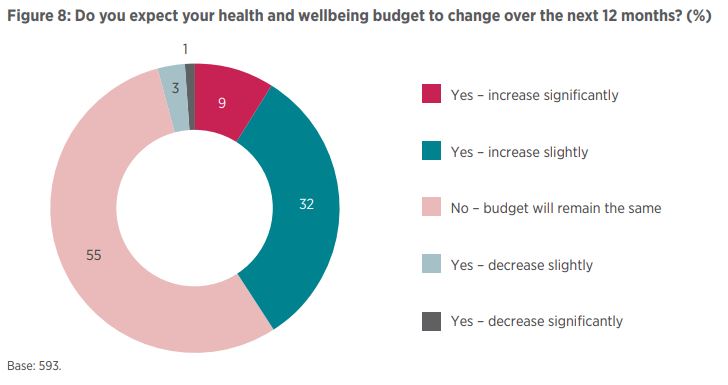How effective are your wellbeing initiatives?
Make sure you’re spending money on the right things.
Why You Should Care
Employers know they need to spend money on wellbeing initiatives.
But it seems that companies might be investing in the wrong areas.
Learn more from CIPD's wellbeing study.
COVID-19 made it clear that wellbeing initiatives are necessary in the workplace. This is because working from home felt more like living at work for many employees.
Burnout and stress is a leading cause of the ‘Great Resignation‘, so companies now need to make sure their employees are satisfied, healthy, and supported amid the stress of work life, familial stressors, and pandemic related-stresses.
CIPD, in partnership with health platform Simplyhealth, surveyed 804 organizations, including more than 4.3 million employees in their health and wellbeing at work survey.
33% of organizations increased their wellbeing benefit budget in response to COVID-19. Comparatively, only 19% of organizations are not doing anything to improve employee health and wellbeing.
Additionally, 41% of organizations expect their health and wellbeing budget to increase in the next 12 months and 55% report their budget will remain the same. The primary focus of wellbeing initiatives focuses on mental health, such as stress management.
Key issues such as menopause transition, sleep hygiene, men’s health issues, fertility treatment or issues, and menstrual health receive significantly less attention compared topics like provisions for working parents or guardians of children and bereavement.

Interestingly, organizations in the public sector are much more likely to include support for these underprioritized issues.
For instance, regarding menopause transition, 50% of public sector organizations offer provisions compared to 32% of non-profits and 26% of private-sector organizations.
Do wellbeing provisions help workers?
While it is promising that employers know they need to focus more (and spend) on wellbeing tech and provisions for workers, are these methods actually yielding success?
20% of respondents told CIPD that health and wellbeing activity has not led to an uplift in wellbeing, while 40% report it’s too early to tell.
Although overall employees are unsure of the benefits of wellbeing initiatives, organizations with strategic approaches in place achieve far better outcomes than those that do not.
Regarding company performance, 27% of organizations with standalone health and wellbeing strategies report improved productivity compared to 5% of those that don’t.
A respondent from a large public sector health organization reflected: “Senior managers need to engage with all colleagues and not just assumed what they need. Different groups need different things.”
Clearly, managers need to step up and make sure that employer wellbeing initiatives are in line with worker needs. There is limited point in spending money on programs that employees won’t use.
Sign up to the UNLEASH Newsletter
Get the Editor’s picks of the week delivered straight to your inbox!

Intern
Tully is an economics and journalism student currently on a seven-week internship at UNLEASH.